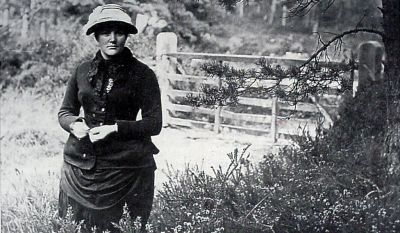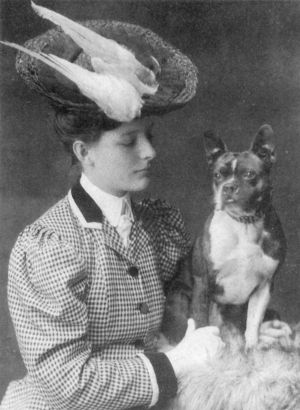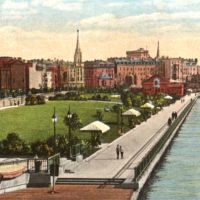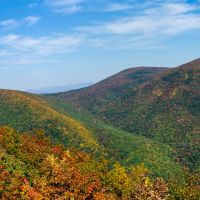Primary Source
From landscape architect Charles Eliot to the editor of Garden and Forest:
Your recent editorial on the Waverly Oaks, with its plea for the preservation of the charming scene in which they stand, prompts me to lay before you an imperfect outline of a scheme by which not the scene at Waverly only, but others of the finest bits of natural scenery near Boston, might perhaps be saved to delight many future generations.
. . . Available open ground is being rapidly occupied; and Boston, like New York, may yet be compelled to tear down whole blocks of buildings to provide herself withthe needed oases of light and air. But a crowded population thirsts, occasionally at least, for the sight of something very different from the public garden, square or ball-field.
The railroads and the new electric street railways, which radiate from the Hub, carry many thousands every pleasant Sunday through the suburbs to the real country; and hundreds out of these thousands make the journey for the sake of the refreshment which an occasional hour or two spent in the country brings to them. Within ten miles of the State House there still remain several bits of scenery which possess uncommon beauty and more than usual refreshing power. Moreover, each of these scenes is, in its way, characteristic of the primitive wilderness of New England, of which, indeed, they are surviving fragments.
. . . Lovely natural scenery supplies an education in the love of beauty, . . . if, as we are taught, feeling for artistic beauty has its roots in feeling for natural beauty, opportunities of beholding natural beauty will certainly be needed and prized by the successive generations which are to throng the area within ten miles of the State House.
As Boston's lovers of art united to found the Art Museum, so her lovers of nature should now rally to preserve for themselves and all the people as many as possible of these scenes of natural beauty which, by great good fortune, still exist near their doors.
Charles Eliot, "Letter to the Editor" in Garden and Forest, Vol. 3, Issue 106, March 5, 1890.








